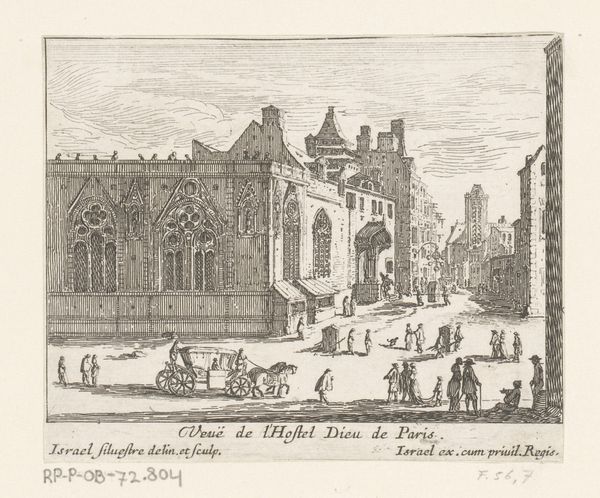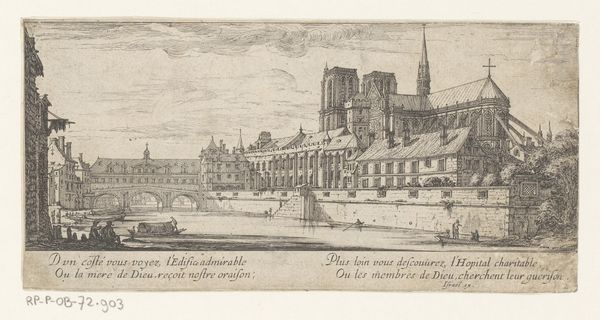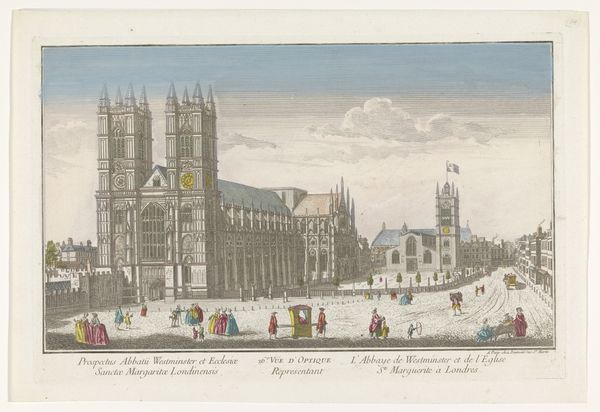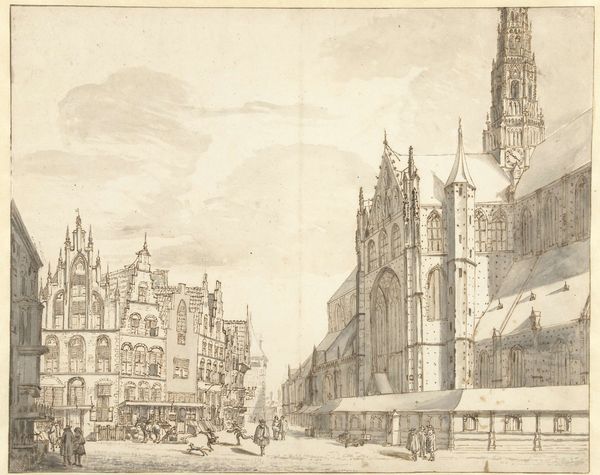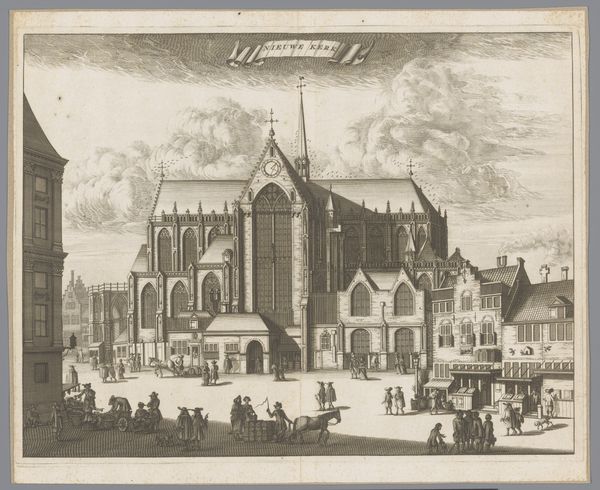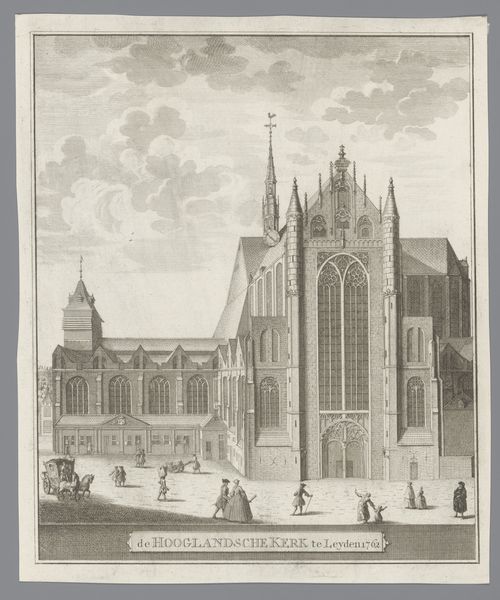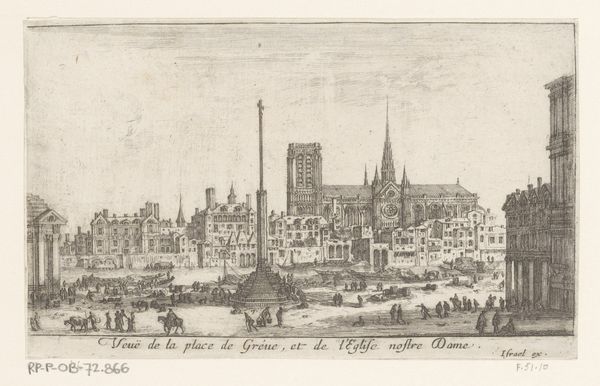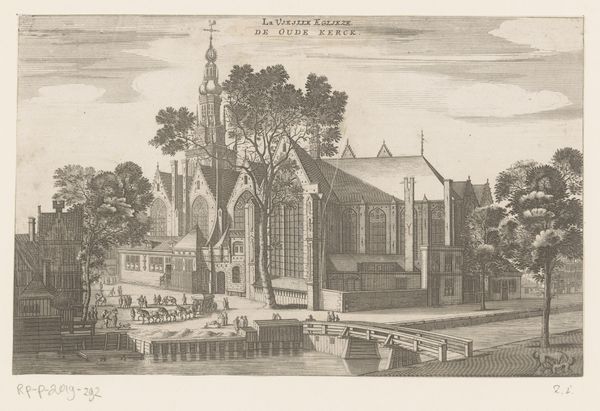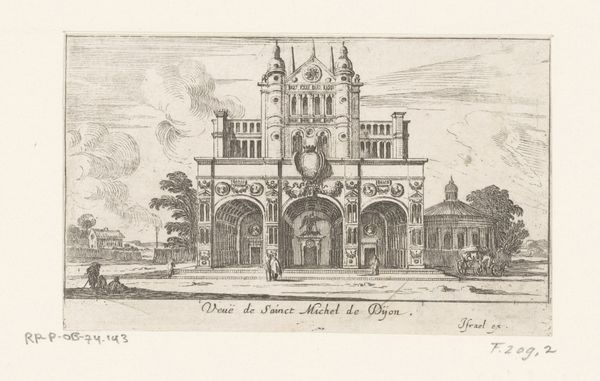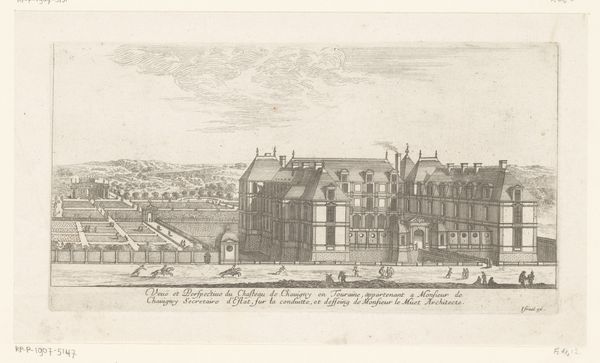
print, engraving, architecture
#
baroque
# print
#
line
#
cityscape
#
engraving
#
architecture
Dimensions: height 129 mm, width 249 mm
Copyright: Rijks Museum: Open Domain
Curator: This is Israel Silvestre’s "View of the Sainte-Chapelle," an engraving from around 1650, currently housed at the Rijksmuseum. What strikes you most about it? Editor: The sheer detail is amazing, especially considering it’s just lines! I'm drawn to the way it captures daily life with the figures in the foreground, but the Sainte-Chapelle itself is so imposing. What do you see in this piece? Curator: Beyond the beautiful line work and architectural detail, this print speaks volumes about power and its visual representation in 17th-century Paris. The Sainte-Chapelle, originally built to house Louis IX's collection of relics, isn't just a religious building; it’s a statement about the French monarchy’s divine right to rule. How do you think Silvestre’s depiction reinforces or challenges that idea? Editor: I hadn't thought about the divine right connection! It feels like the engraving is showcasing the architecture, and, because everyone is in the foreground, maybe democratizing access to the royal symbol? Curator: That's an interesting reading! Perhaps, but consider this: prints like these circulated widely among the elite, solidifying their understanding and appreciation of royal power. It reminds me of Gramsci’s concept of cultural hegemony. The architecture, and its portrayal, served as a constant visual reminder. The inclusion of everyday people normalizes the spectacle of power, but does not necessarily allow or create power for the masses. What do you think of that? Editor: That is insightful! I was seeing what I wanted to, and that certainly has changed my perspective. Curator: Ultimately, the print is a window into the complex relationship between power, representation, and social control in early modern Europe. Hopefully it allows us to think more deeply about this moment, the legacy of colonialism and religious war, as well as think about modern systems of oppression and control, and how art can both subvert and support power systems. Editor: Definitely something I will reflect upon! Thank you.
Comments
No comments
Be the first to comment and join the conversation on the ultimate creative platform.

